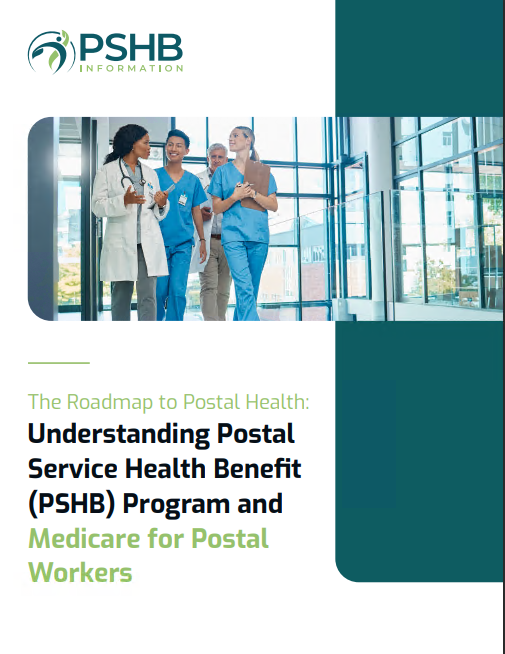Key Takeaways
- USPS employees and retirees will face significant changes in healthcare coverage with the new Postal Service Health Benefits (PSHB) program.
- It’s essential to understand the transition process and plan for how these changes will impact your coverage and healthcare costs.
USPS Employees Are About to Be Hit with Big Healthcare Changes—Here’s What You Need to Prepare For
The healthcare landscape for USPS employees and retirees is undergoing a major shift. With the introduction of the Postal Service Health Benefits (PSHB) program, this marks a significant departure from the existing Federal Employees Health Benefits (FEHB) program that many are familiar with. Navigating this new terrain will be crucial for USPS workers and retirees, as it will impact their healthcare options, costs, and future benefits. Here’s what you need to know to prepare for these changes and ensure that you make the right decisions for yourself and your family.
The Shift from FEHB to PSHB: What It Means
For years, USPS employees and retirees have received their healthcare coverage through the Federal Employees Health Benefits (FEHB) program. However, starting in 2025, the new Postal Service Health Benefits (PSHB) program will take over, exclusively providing healthcare plans for USPS workers. This change is part of a broader overhaul meant to streamline postal worker benefits and align them with the unique needs of this workforce.
While the FEHB program offered a variety of health insurance plans that included USPS and other federal employees, the PSHB program will be tailored specifically for postal employees. This shift is meant to address the particular health and financial needs of USPS workers. However, this also means that postal workers will no longer have access to the full range of plans available under the FEHB, and they will need to familiarize themselves with a new set of options.
Why Is This Change Happening?
The transition to the PSHB program is part of a broader legislative reform aimed at addressing the financial challenges facing the USPS. The Postal Service Reform Act, passed in 2022, introduced several changes, with healthcare reform being a significant component. The goal of the PSHB program is to reduce the financial burden on the USPS while ensuring that postal workers and retirees receive adequate healthcare coverage.
For USPS employees, this change means that while they will still have access to health insurance coverage, the structure of the plans and the benefits provided may differ from what they are accustomed to under FEHB. This shift also opens the door for new health plan providers specifically geared towards postal workers, but it may limit the options that were previously available under FEHB.
Preparing for Open Enrollment Under PSHB
One of the most significant impacts of the switch to the PSHB program will be the upcoming open enrollment period. Postal employees and retirees will need to review their options carefully and choose a new healthcare plan that fits their needs. The PSHB plans may offer different levels of coverage, premiums, and network providers compared to what employees are used to under FEHB, making it essential to stay informed.
During the open enrollment period, which typically takes place annually, employees and retirees will have the opportunity to switch plans, update their coverage, and ensure that their chosen plan aligns with their healthcare needs and financial situation. USPS workers should prepare by understanding the different plan options, comparing benefits, and making informed decisions based on their health and financial requirements.
What USPS Retirees Need to Know
Retirees are also significantly affected by the PSHB transition. If you are a retiree enrolled in Medicare Part A and Part B, you will be required to enroll in a PSHB plan. The good news is that the PSHB program is designed to coordinate benefits with Medicare, potentially lowering out-of-pocket costs for retirees who are eligible for both Medicare and the PSHB program.
Retirees not yet enrolled in Medicare will need to consider how the PSHB program fits into their long-term healthcare needs. Since PSHB is expected to align closely with Medicare, it’s essential for retirees to understand how their health coverage will change once they become Medicare-eligible and what steps they need to take to maintain continuous coverage.
Will Medicare Enrollment Be Required?
For current and future USPS retirees, enrollment in Medicare will play a crucial role in their healthcare coverage. Starting in 2025, all USPS retirees who are 65 or older will be required to enroll in Medicare Part A and Part B to be eligible for the PSHB program. This is a major change for postal retirees, as it ensures that Medicare becomes the primary insurance for those over 65, with the PSHB plan serving as secondary coverage.
While some retirees may already be enrolled in Medicare, those who are not will need to consider the implications of signing up. Medicare enrollment may affect healthcare costs, particularly premiums for Part B, and it will be important for retirees to plan accordingly. Failing to enroll in Medicare could result in losing access to PSHB coverage, so it’s vital to understand these requirements ahead of time.
Impact on Current Employees: What You Should Do Now
Current USPS employees will also need to prepare for the healthcare changes ahead. Although active employees will not be required to enroll in Medicare immediately, they will still need to choose a new health plan under the PSHB program during the next open enrollment period. This decision will have long-term implications, especially for employees nearing retirement age.
As a USPS employee, you should take the following steps to prepare for the transition:
-
Educate Yourself on PSHB: Start by understanding the PSHB program and the plan options that will be available to you. Compare these plans with your current FEHB coverage to assess how the benefits, premiums, and network providers differ.
-
Plan for Medicare Enrollment: If you are approaching retirement or are already over 65, it’s crucial to plan for Medicare enrollment. Make sure you understand how Medicare and PSHB will work together to provide coverage.
-
Evaluate Your Healthcare Needs: Consider your current health situation and any ongoing medical conditions. Choose a PSHB plan that provides the coverage you need, including access to specialists, hospitals, and medications.
-
Understand Costs: Although specific prices cannot be discussed, it is important to be aware that your costs may change. Make sure to evaluate both premium and out-of-pocket expenses when choosing a new plan.
PSHB and Family Coverage
Another important aspect of the PSHB program is how it will impact family coverage. USPS employees with family members enrolled in their health plan will need to review how the new plans cover spouses and dependents. While the PSHB program is designed to offer comprehensive coverage for postal workers and their families, there may be differences in the networks, services, and benefits provided under these new plans.
If you have family members covered under your current FEHB plan, it’s crucial to ensure that their needs will continue to be met under the new PSHB options. Review the family coverage options carefully during the open enrollment period, and don’t hesitate to consult with a licensed insurance agent if you have questions about the coverage specifics.
Stay Informed and Take Action
With the changes to USPS healthcare on the horizon, it’s important to stay informed and proactive. USPS employees and retirees should make use of all available resources to better understand the PSHB program and how it will affect their health coverage. Take the time to review plan details, compare options, and make decisions that align with your healthcare needs and financial situation.
For retirees, the Medicare requirement adds another layer of complexity, so make sure you are up to date on enrollment deadlines and coverage details. The transition to PSHB is a significant shift, but with the right preparation, you can navigate the change smoothly and ensure that you continue to have the healthcare coverage you need.
Navigating the Future of Postal Healthcare
The new Postal Service Health Benefits (PSHB) program is set to reshape the way USPS employees and retirees access healthcare. While this change brings new options, it also requires careful planning and attention to detail. Whether you’re an active employee or a retiree, taking the time to understand your new healthcare options and preparing for the upcoming changes will help you maintain quality care and protect your financial well-being.









